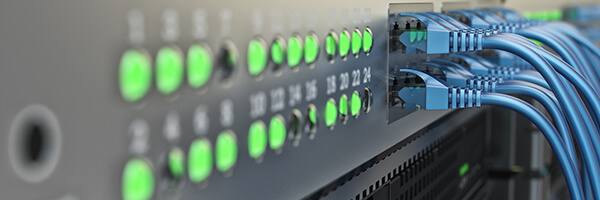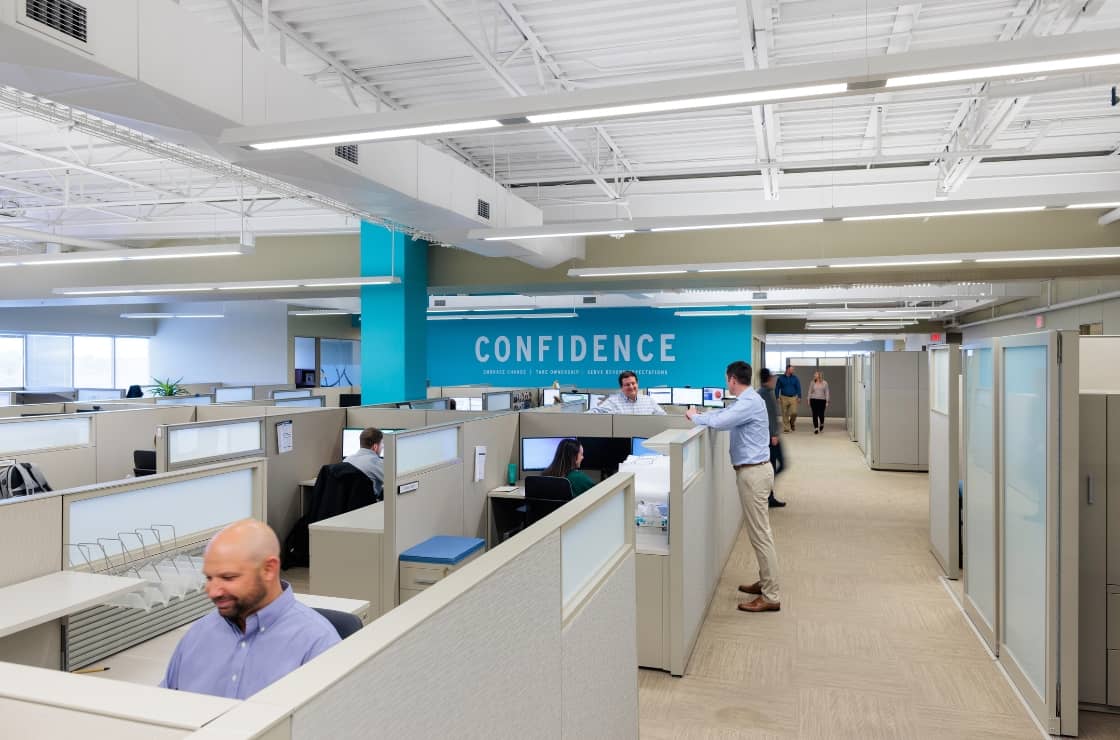6 Tips for Building an Optimal Network for Your Business

Businesses today run on technology—and the strategies that drive the selection, design, and implementation of that technology must be spot-on. It may seem simple in principle to use a network for accessing the Internet, sending email, and running daily business applications either on-premises or remotely. Yet, for businesses of nearly any size, success or failure rests largely on the performance and reliability of that network.
To thrive in a competitive environment, your business deserves nothing less than an optimal enterprise technology network—i.e., a network that’s designed for your business’s unique needs. When clients ask us at Lutz Tech to evaluate their current network and design or build a new network infrastructure from the ground up, the following six tips serve us well as guideposts for our work.
1. Understand the needs of the business upfront.
From a technology standpoint, that means identifying the specific business application software that will run your business. Software dictates all technology decisions that follow. If you start talking about hardware first, you risk purchasing too much or too little equipment or worse - something that won’t work at all. All software vendors have software and hardware requirements that provide best practices to get the highest performance and reliability from their business applications. If you deviate from that, you’re setting yourself up for problems—including performance and functional issues.
2. Cloud vs. on-premises operation – determine your strategy, then build out accordingly.
The “Cloud”
What does running in the cloud mean? Basically, you are renting your server(s)’ needs on a monthly basis. Servers are located in a secured data center somewhere other than your office. You are paying for computing power, storage, backup, connectivity, and redundancy on an as-needed basis. Connectivity from workstations to servers is via the Internet.
Pros:
- Ability to scale network performance and capacity on the fly in almost real-time
- Improved security for data and the business
- Ability to apply new technologies and applications as they are released
- Highest level of business continuity protection
Cons:
- Cost of ownership is more expensive than on-premise solutions.
- Data transmission to and from the cloud can have costs you were not planning on.
- Operation is dependent on high-quality Internet connectivity.
“On-Premise” Solution
What does that mean? Until recent years, the majority of servers running small to medium businesses were on-premise or running in a room in their office. Connectivity from workstations to servers is via copper twisted pair Ethernet cabling.
Pros:
- Network connectivity to Servers independent of the Internet
- More control over physical access to servers and data
- Less expensive ownership model vs. “Cloud”
- Can utilize less expensive Internet services
Cons:
- Requires capital investment upfront every 5-7 years
- Not as easy to scale up resources as needed
- Requires physical space for equipment and environmental protection
- No guarantee of availability, and requires more IT support
“Hybrid” Environments
A hybrid solution is where there are both local servers and some “cloud” presence in the network architecture. An example of this would be Microsoft 365 cloud email services along with a local file/print/accounting server. At Lutz Tech, we recommend that businesses weigh the cost implications of cloud vs. on-premises operations with their overall business and operational goals to arrive at a solution that makes the most sense.
3. High-quality Internet Service.
Whether you opt for an on-premises or cloud strategy, your business depends on an Internet connection that is fast and reliable. The best Internet connection is based on a fiber connection to your building, while the least expensive is based on a cable modem technology. Most small and midsize businesses today utilize a single Internet connection. It’s worth having a conversation about the benefits and costs of having a backup Internet connection.
4. Develop and deploy a data protection/disaster recovery strategy for your network.
Data protection and DR services are insurance policies for human error and attacks from the World Wide Web. Ask yourself, how often do I need to have my data backed up? Once every hour? Servers, folders, and files should be backed up locally and offsite at least daily. They should be encrypted at rest and in transmission. In a disaster, how long can you afford the network to be offline? Make sure your plan addresses and specifies two things - RTO and RPO.
5. Ensure your network is properly Secured.
A network that is well protected has the following qualities.- Physical controls in place for server(s)
- Logical separation of access to business data on the network.
- Tier 1 Network firewall with active subscriptions for content filtering
- Workstations with anti-virus/anti-malware protection
- Web traffic filtering to protect users from hitting known sources of malicious code
- Anti-spam and two-factor authentication for email services
- User passwords that are 12-16 characters in length that meet complexity requirements
There is never a case where you will be 100% secure.
6. Work with an established, experienced, and trusted IT service provider to architect or re-architect your network and provide ongoing support.
The best providers will utilize Tier 1 hardware and software from trusted and well-supported vendors. Hewlett Packard, Dell, Microsoft, and Cisco are Tier 1. Your primary goal should be to have ongoing access to best-in-class support and get a five-to-seven-year life cycle out of your equipment. If you have any questions on this topic, please contact us or learn more about how our Lutz Tech services could benefit you.
- Achiever, Responsibility, Learner, Analytical, Belief
Gary Newton
Gary Newton, Lutz Tech Shareholder, began his career in 1988 and has over 35 years of experience in the outsourced IT industry. With deep technical expertise and a passion for innovation, he plays a key role in overseeing client services, project implementation, and cybersecurity at Lutz Tech. His work has been instrumental in building the systems and teams that support the division's long-term growth and success.
Guiding critical technology initiatives, Gary focuses on solving complex cybersecurity challenges, improving operational efficiency, and fostering continuous improvement within the department. He plays an active role in developing internal methodologies and mentoring emerging talent, helping them grow into technical leaders and trusted resources.
At Lutz, Gary embraces change by staying at the forefront of evolving technologies and cultivating a culture of growth and adaptability. His hands-on approach and dedication have made him a cornerstone in shaping how Lutz Tech delivers reliable, forward-thinking IT solutions.
Gary lives in Omaha, NE. Outside of work, he enjoys spending time with his family, the great outdoors, and staying active.
Recent News & Insights
Lutz Announces Ryan Cook as New Managing Shareholder
Decoding Performance: Analyzing Your Monthly Financial Statements
Benefits of Temporary Staffing
Financial Planning Advice for Recent College Grads



.jpg?width=300&height=175&name=Mega%20Menu%20Image%20(1).jpg)
%20(1).jpg?width=300&height=175&name=Mega%20Menu%20Image%20(2)%20(1).jpg)
%20(1)-Mar-08-2024-09-27-14-7268-PM.jpg?width=300&height=175&name=Untitled%20design%20(6)%20(1)-Mar-08-2024-09-27-14-7268-PM.jpg)

%20(1)-Mar-08-2024-09-11-30-0067-PM.jpg?width=300&height=175&name=Untitled%20design%20(3)%20(1)-Mar-08-2024-09-11-30-0067-PM.jpg)
%20(1).jpg?width=300&height=175&name=Mega%20Menu%20Image%20(3)%20(1).jpg)
%20(1).jpg?width=300&height=175&name=Mega%20Menu%20Image%20(4)%20(1).jpg)
%20(1).jpg?width=300&height=175&name=Mega%20Menu%20Image%20(5)%20(1).jpg)
-Mar-08-2024-08-50-35-9527-PM.png?width=300&height=175&name=Untitled%20design%20(1)-Mar-08-2024-08-50-35-9527-PM.png)


.jpg)




